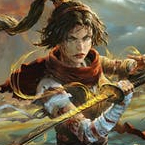For the first time, Flesh and Blood sees cards hitting the ban list for direct balance reasons! (Drone of Brutality was banned earlier, but not directly to swing the meta.) If you haven’t yet seen the announcement, go check it out. The short version is that Seeds of Agony is banned in both Blitz and Classic Constructed, while the new Duskblade is banned for Classic Constructed only.
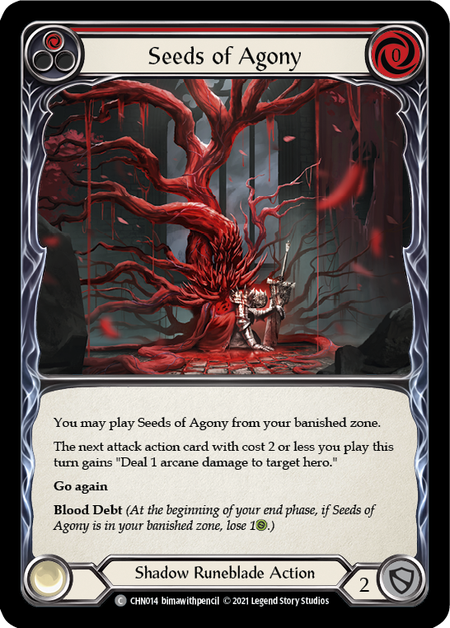
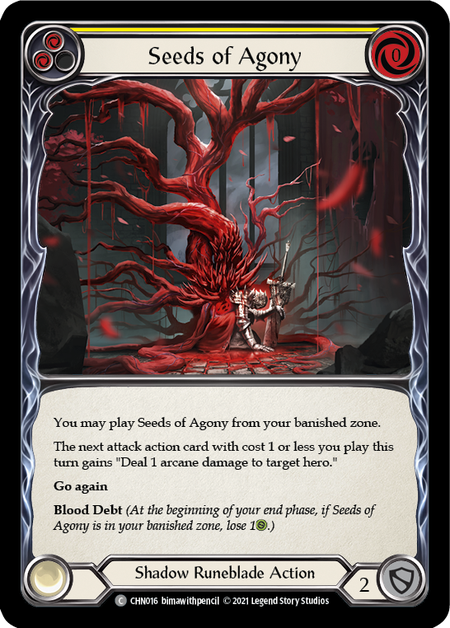
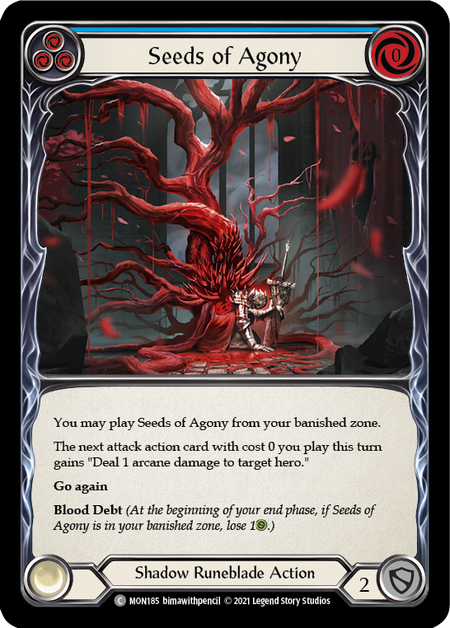
Banned in Blitz and Classic Constructed on Sept. 24th
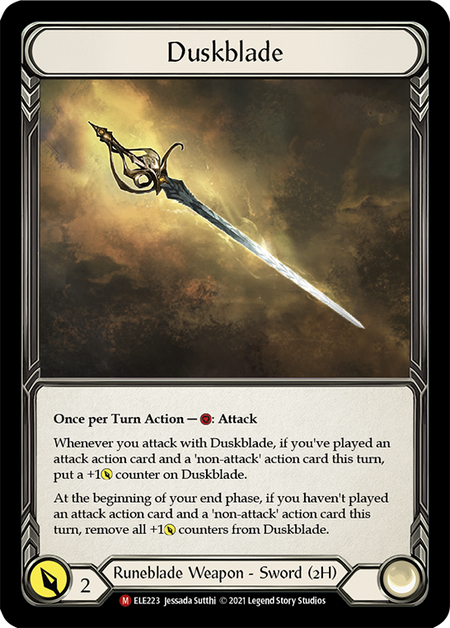
Banned in Classic Constructed on Sept. 24th
I’ve played with Chane a fair bit, including winning multiple tournaments. I think it’s safe to say that this change is going to be devastating to the way that Chane builds tend to play the game. At present, most competitive Chane builds are targeting about 50% blood debt and 50% other cards. This means a CC build needs to run 30 blood debt cards in a 60-card deck, and potentially more in the event that you run over 60 cards (for example, in matchups where you sideboard in a bunch of cards to fight fatigue).
The problem is that there just aren’t that many good blood debt cards! In fact, dubious blood debt cards are already making their way into builds in order to hit the appropriate blood debt ratios. Losing Seeds of Agony means losing nine blood debt cards in CC and six in Blitz, as Seeds was a max copies autoinclude in all three colors. Good replacements are not easily available!
This is actually even worse than it might look, because Chane decks run other cards that are rather dependent on Seeds of Agony. Here are some of the lines of play that have historically relied on Seeds:
First up, we have the Nebula Blade. This is a great weapon for Chane, but it is reliant on cheap non-attack actions to buff it to full power. Seeds was perhaps the best option, as you could often get it “for free” via Soul Shackle banishes.
Then there's the classic Rift Bind, a core component of Chane’s gameplay because it helps him counter fatigue strategies. However, without Seeds of Agony, Rift Bind can no longer be considered a reliable counter; since Seeds is free, has go again, and is playable from the banish zone, it is by far the easiest non-attack action to play in order to power up Rift Bind. Sure, you might be able to get two or three non-attack actions in a turn without Seeds, but in my view, that isn’t going to be enough for the kind of overwhelming turns Chane can currently pull off. Rift Bind just lost a lot of value.
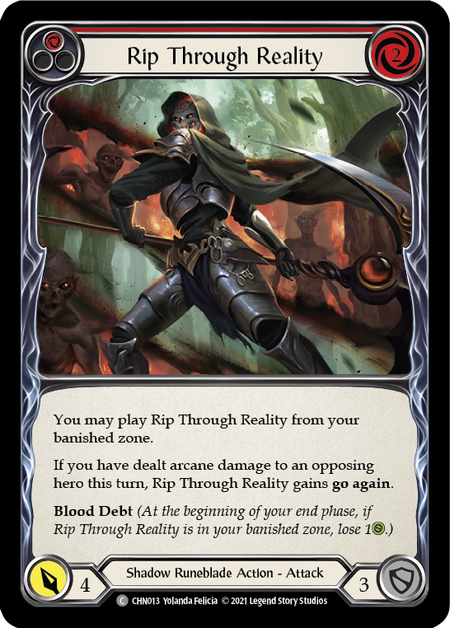
Also losing reliability? “If you have inflicted arcane damage” cards. Yes, Chane has other ways to inflict arcane damage- he can generate Runechants via Grasp of the Arknight or with Nebula Blade hits- but Seeds was often his “primary” arcane damage source. This means cards like Meat and Greet or Rip Through Reality are also going to suffer from the loss of Seeds of Agony, as it will become significantly more difficult to get their bonus effects.
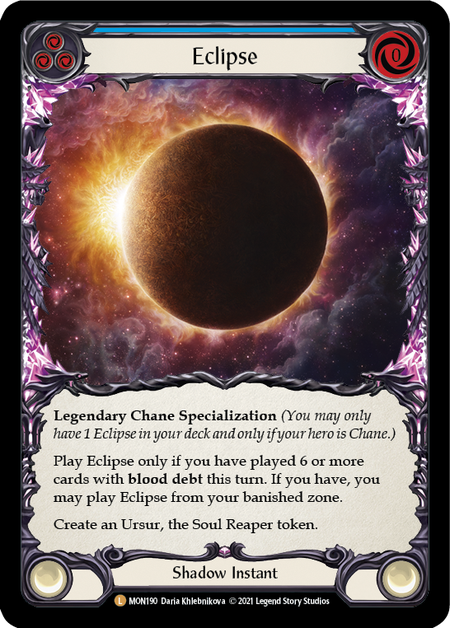
And then there's Eclipse, Chane’s unique Legendary. Eclipse relied heavily on the free Seeds of Agony to get enough blood debt cards played in a turn. Now that Seeds is gone, Eclipse is probably also gone for most current builds- weakening Chane’s endgame against control builds even further.
What we end up with is a Chane deck that can’t pull off big Rift Binds in the endgame, can’t hit Eclipse, can’t trigger Nebula Blade as often, and can’t do arcane damage as consistently. Those are big hits, especially against control/fatigue strategies.

Chane did have hope on the horizon with Tales of Aria- Duskblade, which generates incredible value and basically wins those matchups on its own. Unfortunately for Chane, Duskblade has now been banned too!
(To be fair, this felt necessary for overall balance. In my early testing Duskblade was ridiculously powerful and difficult to contain, easily scoring multiple counters and becoming insurmountable to deal with. While some aggressive builds might have been able to race Duskblade and put pressure on the counters, it felt like control decks had almost no chance against it.)
OK, so thus far I’ve given a bunch of reasons why this change is a big problem for Chane. Quite frankly, my immediate reaction was that this change more or less bans Chane from competitive play.
That said, early in the Monarch meta, I was doing some regular testing with two experienced players I’d encountered in the first Skirmish season: Brendan Patrick and Dante Delfico. At that time, we had identified Chane as “the deck to beat”- until a certain piece of tech became publicized to counter Chane.
At first I thought that was it, that Chane was dead. In fact, I was ready to give up and start working on another deck. However, Brendan and Dante kept testing Chane and figured out how to beat the new tech. I didn’t even believe them when they told me at first, but they were right- and sure enough, Chane had major competitive success well after the supposed “killer tech” had come out.
I was impressed by this because they had managed to find the answer that I thought wasn’t there- and it’s quite possible that the same thing is true now! Perhaps there’s another powerful Chane build just waiting to be discovered for those with perseverance. If I had to bet on it right now, I would say that Chane probably isn’t a competitive character anymore, but I hope I’m wrong and that someone will bring out cool new builds that can keep up the competition!
Perhaps there’s another powerful Chane build just waiting to be discovered for those with perseverance.
In the spirit of that sort of innovation and development, let’s think a bit about what a Chane deck might include in order to adjust to these changes.
First up, we need to cut all nine Seeds. If you were playing non-red Rift Binds those might have to go too (they relied on Seeds to scale). What goes in those slots?
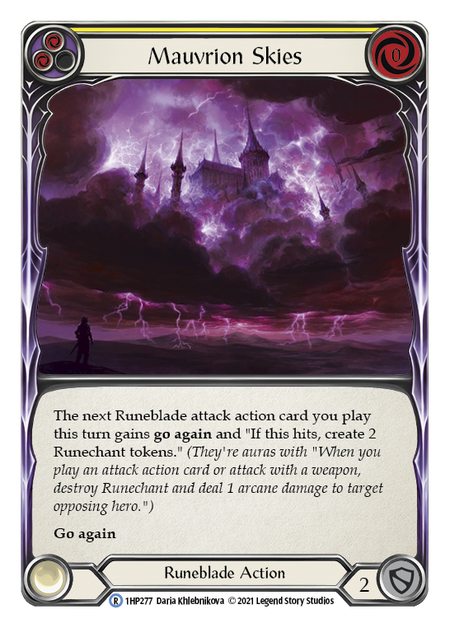

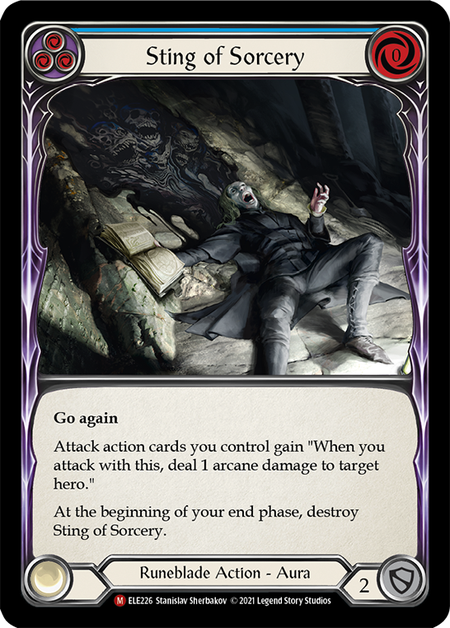
One option is to play more non-blood debt cards. Non-attack actions such as Mauvrion Skies (yellow), the upcoming Sting of Sorcery, or even Nimblism or Minnowism could help fill the gap. This will decrease the deck’s consistency relative to current builds, but allow for powerful turns when things line up properly.
Similarly, now-inefficient Rift Binds (especially non-reds) or cards that rely on arcane damage could be replaced by non-blood debt attack options such as Tremor of iArathael or Snatch.


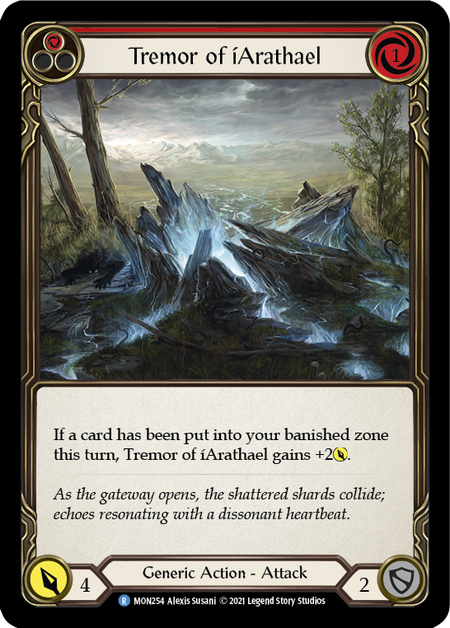
However, losing lots of blood debt might not be the best plan. Another option could be running blood debt attacks that don’t currently see play, like Rifted Torment. These cards currently aren’t considered so efficient, but can be included without weakening your banishes too much. Similarly, one could play more copies of Seeping Shadows and go for a more blue-heavy curve to compensate.
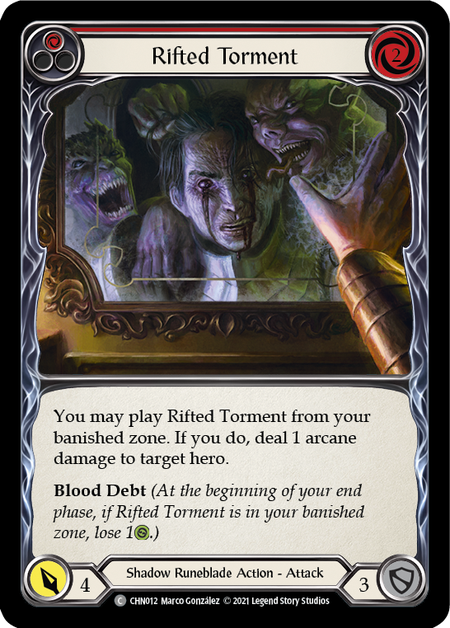
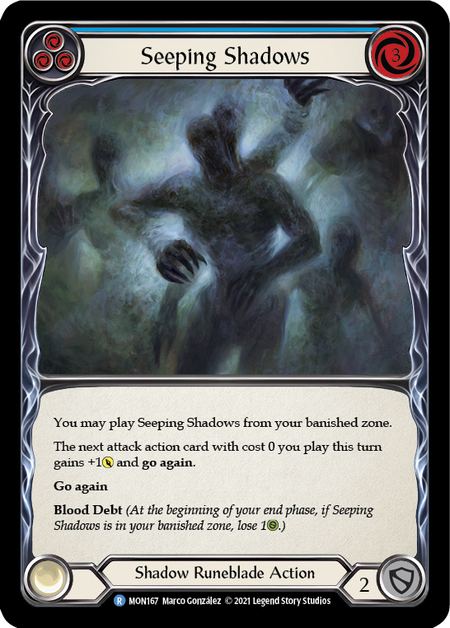
I’m not sure if either of these approaches will ultimately address the elephant in the room- countering fatigue decks- but perhaps something will come up. My hope is that Chane players and deckbuilders do manage to come up with something interesting. Already, our very own Jacob Smith (JokerJake7) is featuring a Seedless Chane build on FABDB.
While I do think the current Chane builds are too dominant (and poised to get better with Tales, at least without the bans) I’d ideally like to see the hero preserved in some fashion or another.
One thing that I take away from this is that LSS is willing to monitor the meta and take action if things get out of balance. In my view, that bodes well for the future of the game; Chane was strongly overperforming in the Road to Nationals season, and hopefully reining him in for Nationals will allow a more interesting and diverse meta to develop.



